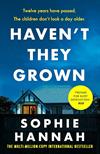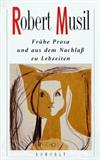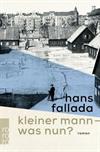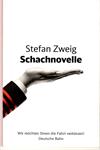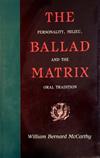
The Ballad Matrix: Personality, Milieu, and the Oral Tradition
1 journaler for this copy...
 This is not a book likely to appeal to someone who knows nothing at all about ballad scholarship. Though clearly and carefully written, it contains a certain amount of jargon. McCarthy has taken pains to put all his readers, from whichever field of scholarship they come, on the same page; thus, he includes definitions like what he means by standard ballad meter, and brief sketches of the chief theoretical works he’s drawing on: namely Albert Lord’s work on oral poetry, and David Buchan’s extension of it to ballads; also structuralist approaches practiced by Buchan and by Fleming G. Andersen.
This is not a book likely to appeal to someone who knows nothing at all about ballad scholarship. Though clearly and carefully written, it contains a certain amount of jargon. McCarthy has taken pains to put all his readers, from whichever field of scholarship they come, on the same page; thus, he includes definitions like what he means by standard ballad meter, and brief sketches of the chief theoretical works he’s drawing on: namely Albert Lord’s work on oral poetry, and David Buchan’s extension of it to ballads; also structuralist approaches practiced by Buchan and by Fleming G. Andersen.The meat of the book, however, is considering the corpus of 22 ballads that Motherwell collected from a single singer, Agnes Lyle of Kilbarchan, in 1825. Note that not all the texts of these songs are included in the book; however, they’re readily available in various collections of Child ballads, as well as online. The author intends to elucidate Lyle’s individual style and values with consideration of her social and historical context, and demonstrate that she used an oral composition technique to remake transmitted material into a unified and personal body of songs. (She also knew songs in other genres, which Motherwell didn’t bother to record in full, so that we can’t know to what extent she personalized them. McCarthy argues that they would have been less fully integrated into the singer’s style, since her technique was strongly linked to the meter and vocabulary of the ballads.)
McCarthy’s discussions of the ways in which Agnes Lyle’s highly individual ballad texts are composed in terms of various levels of structure, such as characters, narrative, and stanzaic groups, shows the principles of binary, trinary, and annular structuring occurring in parallel or counterpart (aided by rhyme and assonance) — all work to make a harmonious, narratively and symbolically complete ballad. He argues that she was most able to do this in those items in male-rhymed ballad meter, whereas other meters could make it more difficult to do so. Ballad singers worked with a learned corpus of formulaic vocabulary, standard symbolism, and narrative devices, as well as structural techniques. This is not the same as the formulas that Lord discovered in epic poetry, but an extension of "oral-formulaic" theory elucidates it nonetheless. McCarthy ends with a discussion of ways in which Lyle extended and transcended her technique, and makes a case for at least three of the ballads, "Mary Hamilton", "The Cruel Mother", and "The Braes o Yarrow", as great poetry by any standards (I agree with him about the third of these).
There follows a discussion of the use of symbolism to add meaning and social and emotional content to the relatively stark outward form of the ballads. The author uses Agnes Lyle’s repertoire to illustrate the theories of Roger deV. Renwick ("semiotics" of sexual relationships, sketchily and unconvincingly presented), Elizabeth Rogers (much more satisfactory, elucidating standard symbolic elements such as e.g. "hunting" or "gift of clothes"), and Fleming G. Andersen ("commonplaces" as carriers of traditional meaning, and "themes" or invariable concatenations of ideas).
The seventh chapter relates what the ballads reveal of Agnes Lyle’s political and moral views to her surroundings and the events of 1820’s Kilbarchan — she was understandably angry, and there was a strong strain of egalitarianism in the local culture anyway, so that Lyle’s songs have a relentless emphasis on the perfidy of titled, propertied, or mercantile individuals, and on the disaster that attends anyone who marries one (marriage and is almost invariably linked to death Lyle’s choice of phraseology, and she was single herself, for whatever relevance that may have). The author makes the point that it is by comparing an individual singer’s texts to a broad corpus that one gets a sense of what is personal in her selection and treatment of the material.
The concluding chapter tries to generalize a theory of oral poetry that is flexible enough to take in all the phenomena of Anglo-Scottish balladry: the formulas and concatenations of ideas found on all levels of organization (which is broader than Lord’s own idea of "formula") and the varying ways in which literacy, oral learning, differing techniques, memorization versus recomposition, and the "fixing" of memorized texts, worked together for various singers. All in all, this strikes me as a very thorough, very well-thought-through book.

